In recent developments around town, a new design trend has emerged. Architects of residential buildings of modest heights, as little as three or four stories, are opting to change the facade material of the uppermost floor, and sometimes create a slight setback. The effect is often to cheapen the structure, exposing the main facade for what it so often is: a veneer. But what is the purpose of this novel technique?
The short answer is that it is intended to pacify conservative neighborhood groups. These groups, whose hate for the height of new buildings borders on the fanatical, would rather see floor counts restricted further, but this conflicts with economic rationality. Instead, developers, via architects, offer a visual olive branch; the building may be a taller than you would like, but we can all pretend that the uppermost floor simply doesn’t exist.
Together, the two parties enter into a mutual fantasy. And what benefits does the community reap from this arrangement? None. We are left with with a host of strange and dishonest facades that future Richmonders will struggle to interpret. Let us explain it for them.
To discover the true cause of this phenomenon, we must ask deeper questions. What does this denial of building height accomplish? Why do reactionary neighborhood groups, themselves often symptoms of neighborhood change, strive to stymie further development? What intellectual drug has addicted them to the lowest common denominator?
In a word, Postmodernism. The postwar period, for all of its triumphs and comforts, taught Americans to be wary of change. The potential terror of the nuclear era was amplified by the build up of cold war tension. The atrocities in Vietnam and the acknowledgement of racial oppression at home irreparably damaged the American self image. Finally, rising powers in the east have threatened to dethrone America as the global economic hegemon. At some point along this rocky path, Americans began to look more and more fondly at the past, projecting on it a false image of simplicity and agrarian virtue.
Postmodern angst has had an outsized influence on architecture, in part because of the monumental mistakes of mid-century urban planners. Still, for a culture that makes much of individuality, creativity, and innovation, we are curiously uninterested in progress in the urban realm. New buildings must conform to the image of past, an image we all admit was created by a deeply flawed society. Today, a developer trying to build a four story structure in an ordinary townhouse neighborhood is flattened into a caricature of capitalist greed. But would anyone hate a four story building from 1910 simply because of its height? Of course not. It would be celebrated as the landmark of the neighborhood.
The cardinal sin of the modern structure is its tacit assertion that the city of the future might somehow improve on, or even surpass, the city of the past. The average Richmonder might be able to stomach modernism in an institutional context, as in the wildly popular addition to the VMFA, but they will not permit this architectural blasphemy in their own “backyard.” A populist anger toward architects, developers, and other urban elites has overtaken the local political sphere. We can consider the newly popular and completely trivial top floor psuedo-setback as the architectural equivalent of “Make America Great Again.”
In the face of this conservative wave, is there any hope for urban progressives? Yes, because time is on our side. Many of our fellow citizens may look to the past for answers to today’s problems, but in historical terms, forward is the only direction there has ever been.
Don O’Keefe
Image Credits:
Image 1, Citadel of Hope, via Church Hill People’s News, 2017
Image 2, Jefferson Street Triangle Development, via Church Hill People’s News, 2017
Images 3-5, Westhampton on Grove, via WesthaptonGrove.com, 2016






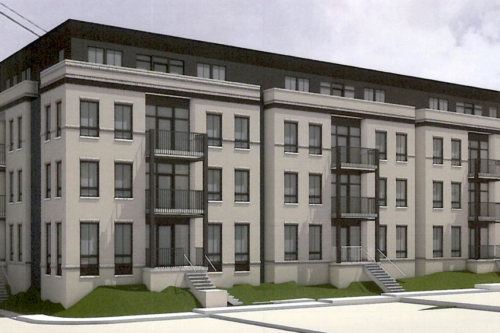
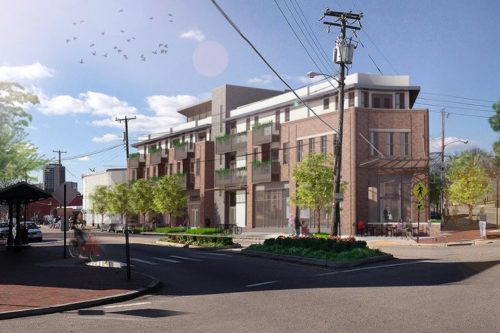
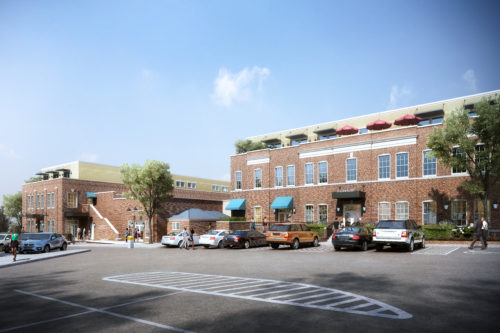
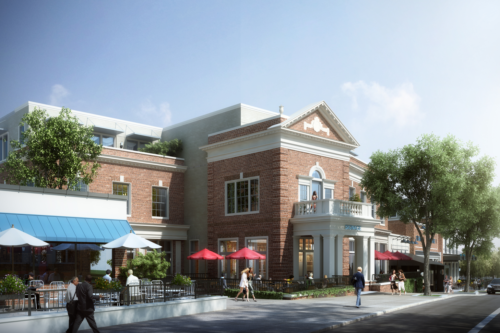
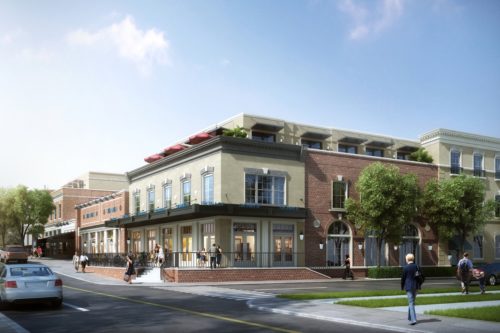
12 Comments
[…] Dan O’Keefe at Architecture Richmond takes on a particular urban architectural feature of our … […]
Pretty much the best thing I’ve ever read about architecture in Richmond. Thanks for this.
If you are so concerned about it, why don’t you buy them and build them the way you want? Honestly I hope more people build it like this just to piss you off and remind you they don’t need your input.
Fuck off Natedrizzle, it’s NIMBYs like you who hold growth back from this city. The setbacks are to appease troglodytes like you. Luckily Richmond is growing in population again and hopefully denser, taller development is built just to piss people like YOU off and remind you they don’t need YOUR input.
I could not agree more!
-Kathryn
I couldn’t feel more mixed about such an article. (which is why I had to write a crit longer than the actual post). On one hand I completely agree with you when you discuss such issues as NIMBYISM, and so on, as well as the some of other issues involving postmodernism (and especially some of the disdain for the conservatism/ and anti-city attitudes behind it). I think we’re also on the same page on the urban planning side of the issue. However, I do have some objections
1-I think when it comes to height, a lot of people have somewhat sensible concerns. While i agree that complaining about a 3-4 story building is usually ridiculous, nobody looks at set back Art Deco skyscrapers in Midtown NYC and sees them as some kind of reactionary joke. New Yorkers were just sick of being in the shadows. Also, Why not target European Cities as being reactionary for that matter? They too have pretty strict height limits.
2-Much of what you mention here about postmodernism I somewhat disagree with from a personal standpoint. However, there are some essences of your narrative I agree with. As someone who grew up loving how exciting ultra modern buildings look I think I would’ve been deep in your camp say 2008-09.
However, after spending time in the city and personally discovering all of the older buildings downtown (and realizing how much more interesting the detail, wear, and tear on the older buildings was than say the very modern, and clean VMFA, or most other modernist buildings), I think it’s reasonable to say I come to this from more of an objective as opposed to a reactionary perspective. What we need to do is actually find a reasonable balance between quality & progress. We need to innovate on one hand, but I think human beings aren’t made to live in a world like that of a cheesy sci-fi movie either where everything appears incredibly plain looking, sterile, and un-ornamented.
I tend to have a disdain for buildings that are both strictly traditional, and un-innovative (Colonial Williamsburg, the State Capitol, and the West End all bore me to tears with their conservative dreariness). However, I’m not a huge fan of for many newer modernist designs as well. I find ranch houses, office parks, and many of the skyscrapers downtown to be incredibly plain, and dreary with their blank walls, and often overly repetitive mechanical like features.
I don’t think the issue is as much that modern architecture is newness, as much as it is simplicity/efficiency. We don’t want to feel too mechanized, or like their lives are nothing more than a nihilistic trek from point A to point B. This is where I have great disagreements with much of the modern movement, and this articles crit of historic design. What I think people appreciate about older styles is their attention to detailing, complexity, and the use of resources into such things as ornamentation. These allow for the building to emphasize that its inhabitants, and the society in which it serves have a soul, and that money/efficiency aren’t all that matter in life (contrary to whatever Ayn Rand says).
While I might have strong disdain for some of the reactionary elements of our culture however, I do think I have a lighter view on the original concept of postmodernism than you do. In some ways comparing the philosophy to MAGA makes sense, as postmodernism also involves a completely unreasonable solution to a serious problem. Nonetheless it’s absolutely foolish to believe that any longing for the past is bad, and that we should simply continue blindly into the future thinking that everything is always better in the future. I think a good analogy to this would be food. Anyone whose seen food Inc would realize that newer and more modern isn’t always better. But I digress…
Anyway, the issue with postmodernism in my opinion isn’t so much the cause as much as the fact that it’s nothing more than modernism wearing an “I’m a duck sign”. It serves as nothing more that a way for architects, and builders to exploit the misguided complaints of modern architecture (not just urban planning).
To conclude, I think what is ideal for the future is that we need to do is look at architecture, and the design of buildings in relation to the past more objectively. We shouldn’t think in a “gone with the wind” mentality, but we cant thing in a “presentist” state either. Ideally, we should forget when in time such buildings were built, and instead carefully analyze WHAT exactly people appreciate about the design of historic buildings, and practically implement them into today’s society, whether that is layout, ornamentation, etc. This is why I believe much the era of 1850 to 1930 with it’s brick Queen Anne Train Stations, and Art Deco towers, all fine detailed, yet not following any strict reactionary set of rules, was probably the most ideal.
Interesting comments. From the perspective of an architect, the setbacks at the top floor provide outdoor spaces and breakup the massing of the building, which is generally considered positive in urban settings. I understand the distaste for dishonest facades however changes in the building energy code has nearly done away with heavy masonry walls that people associate with urban buildings. The building skin is here to stay.
^^That’s Depressing
Write a Comment
Posted
Share
Category
OpinionTags
development • history • opinion • postmodernism